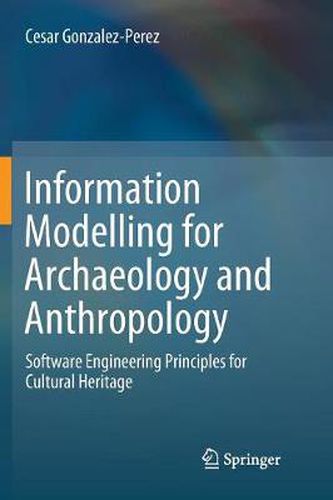Readings Newsletter
Become a Readings Member to make your shopping experience even easier.
Sign in or sign up for free!
You’re not far away from qualifying for FREE standard shipping within Australia
You’ve qualified for FREE standard shipping within Australia
The cart is loading…






This title is printed to order. This book may have been self-published. If so, we cannot guarantee the quality of the content. In the main most books will have gone through the editing process however some may not. We therefore suggest that you be aware of this before ordering this book. If in doubt check either the author or publisher’s details as we are unable to accept any returns unless they are faulty. Please contact us if you have any questions.
This unique text/reference reviews the key principles and techniques in conceptual modelling which are of relevance to specialists in the field of cultural heritage.
Information modelling tasks are a vital aspect of work and study in such disciplines as archaeology, anthropology, history, and architecture. Yet the concepts and methods behind information modelling are rarely covered by the training in cultural heritage-related fields. With the increasing popularity of the digital humanities, and the rapidly growing need to manage large and complex datasets, the importance of information modelling in cultural heritage is greater than ever before. To address this need, this book serves in the place of a course on software engineering, assuming no previous knowledge of the field.
Topics and features:
Presents a general philosophical introduction to conceptual modelling Introduces the basics of conceptual modelling, using the ConML language as an infrastructure Reviews advanced modelling techniques relating to issues of vagueness, temporality and subjectivity, in addition to such topics as metainformation and feature redefinition Proposes an ontology for cultural heritage supported by the Cultural Heritage Abstract Reference Model (CHARM), to enable the easy construction of conceptual models Describes various usage scenarios and applications of cultural heritage modelling, offering practical tips on how to use different techniques to solve real-world problems
This interdisciplinary work is an essential primer for tutors and students (at both undergraduate and graduate level) in any area related to cultural heritage, including archaeology, anthropology, art, history, architecture, or literature. Cultural heritage managers, researchers, and professionals will also find this to be a valuable reference, as will anyone involved in database design, data management, or the conceptualization of cultural heritage in general.
Dr. Cesar Gonzalez-Perez is a Staff Scientist at the Institute of Heritage Sciences (Incipit), within the Spanish National Research Council (CSIC), Santiago de Compostela, Spain.
$9.00 standard shipping within Australia
FREE standard shipping within Australia for orders over $100.00
Express & International shipping calculated at checkout
This title is printed to order. This book may have been self-published. If so, we cannot guarantee the quality of the content. In the main most books will have gone through the editing process however some may not. We therefore suggest that you be aware of this before ordering this book. If in doubt check either the author or publisher’s details as we are unable to accept any returns unless they are faulty. Please contact us if you have any questions.
This unique text/reference reviews the key principles and techniques in conceptual modelling which are of relevance to specialists in the field of cultural heritage.
Information modelling tasks are a vital aspect of work and study in such disciplines as archaeology, anthropology, history, and architecture. Yet the concepts and methods behind information modelling are rarely covered by the training in cultural heritage-related fields. With the increasing popularity of the digital humanities, and the rapidly growing need to manage large and complex datasets, the importance of information modelling in cultural heritage is greater than ever before. To address this need, this book serves in the place of a course on software engineering, assuming no previous knowledge of the field.
Topics and features:
Presents a general philosophical introduction to conceptual modelling Introduces the basics of conceptual modelling, using the ConML language as an infrastructure Reviews advanced modelling techniques relating to issues of vagueness, temporality and subjectivity, in addition to such topics as metainformation and feature redefinition Proposes an ontology for cultural heritage supported by the Cultural Heritage Abstract Reference Model (CHARM), to enable the easy construction of conceptual models Describes various usage scenarios and applications of cultural heritage modelling, offering practical tips on how to use different techniques to solve real-world problems
This interdisciplinary work is an essential primer for tutors and students (at both undergraduate and graduate level) in any area related to cultural heritage, including archaeology, anthropology, art, history, architecture, or literature. Cultural heritage managers, researchers, and professionals will also find this to be a valuable reference, as will anyone involved in database design, data management, or the conceptualization of cultural heritage in general.
Dr. Cesar Gonzalez-Perez is a Staff Scientist at the Institute of Heritage Sciences (Incipit), within the Spanish National Research Council (CSIC), Santiago de Compostela, Spain.